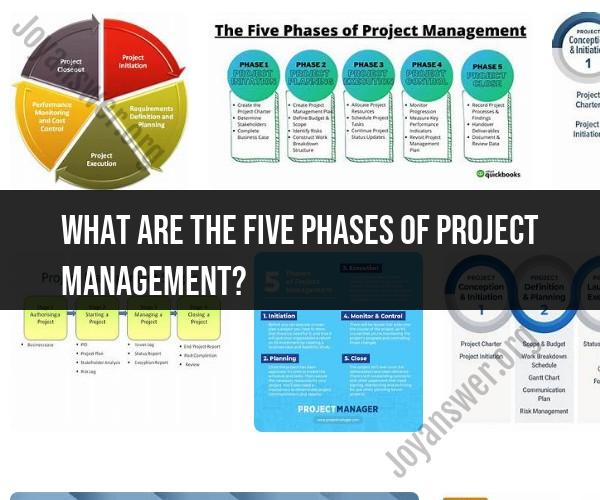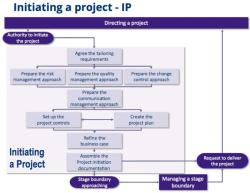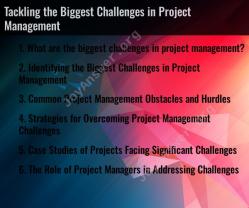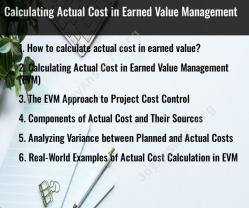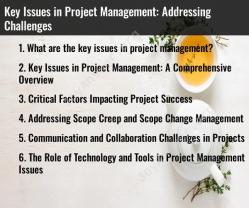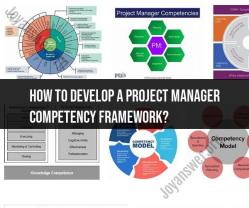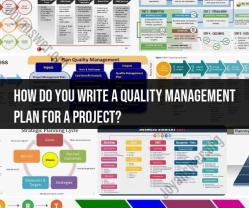What are the five phases of project management?
The five phases of project management, often referred to as the project life cycle, provide a structured framework for planning, executing, and completing projects. These phases help project managers and teams manage projects effectively from initiation to closure. The five phases of project management are as follows:
Initiation Phase:
- This is the first phase of the project where the project's purpose, scope, and objectives are defined. Key activities in this phase include:
- Identifying the project stakeholders and their interests.
- Conducting a feasibility study to assess if the project is viable.
- Creating a project charter that formally authorizes the project.
- Defining initial project requirements and constraints.
- Appointing a project manager and assembling the project team.
- This is the first phase of the project where the project's purpose, scope, and objectives are defined. Key activities in this phase include:
Planning Phase:
- In this phase, the project plan is developed in detail, outlining how the project will be executed, monitored, and controlled. Key activities in this phase include:
- Defining project scope and objectives in detail.
- Developing a comprehensive project schedule and timeline.
- Creating a budget and allocating resources.
- Identifying and assessing risks and developing a risk management plan.
- Establishing communication and reporting processes.
- Developing a quality management plan.
- Creating a detailed project plan document that serves as a roadmap for the project.
- In this phase, the project plan is developed in detail, outlining how the project will be executed, monitored, and controlled. Key activities in this phase include:
Execution Phase:
- This phase involves carrying out the project work as outlined in the project plan. Key activities in this phase include:
- Assigning tasks and responsibilities to team members.
- Acquiring and managing project resources.
- Conducting regular project status meetings and reporting progress.
- Implementing the project's quality assurance and control processes.
- Managing stakeholder expectations and addressing issues as they arise.
- Collecting and documenting project performance data.
- This phase involves carrying out the project work as outlined in the project plan. Key activities in this phase include:
Monitoring and Controlling Phase:
- This phase runs concurrently with the execution phase and focuses on tracking and measuring project performance to ensure that the project stays on track and meets its objectives. Key activities in this phase include:
- Monitoring project progress and comparing it to the project plan.
- Identifying and addressing deviations from the plan.
- Performing quality control and assurance activities.
- Managing changes to the project scope, schedule, or budget through a change control process.
- Updating stakeholders on project status.
- Taking corrective actions as needed to keep the project on course.
- This phase runs concurrently with the execution phase and focuses on tracking and measuring project performance to ensure that the project stays on track and meets its objectives. Key activities in this phase include:
Closure Phase:
- The final phase involves formally closing out the project and ensuring that all project work has been completed to meet the project's objectives. Key activities in this phase include:
- Conducting a final project review and evaluation.
- Obtaining formal acceptance of project deliverables from the client or stakeholders.
- Releasing project resources and closing out contracts.
- Documenting lessons learned for future projects.
- Archiving project documentation and records.
- Celebrating project success and acknowledging the contributions of the project team.
- The final phase involves formally closing out the project and ensuring that all project work has been completed to meet the project's objectives. Key activities in this phase include:
These five phases provide a structured approach to managing projects and help ensure that projects are completed successfully, on time, and within budget. Project managers and teams may use various project management methodologies and tools to navigate each phase effectively.
The Five Phases of Project Management: A Comprehensive Overview
The five phases of project management are:
- Initiation: This phase involves identifying the need for the project, defining its goals and objectives, and securing approval from stakeholders.
- Planning: This phase involves developing a detailed plan for the project, including identifying tasks, resources, and timelines.
- Execution: This phase involves carrying out the plan and completing the project's tasks.
- Monitoring and control: This phase involves tracking the project's progress, identifying and addressing risks, and making adjustments to the plan as needed.
- Closure: This phase involves completing the project, delivering the project's deliverables to stakeholders, and evaluating the project's success.
Project Management Demystified: Exploring the Five Key Phases
Initiation
The initiation phase is the most important phase of project management, as it sets the foundation for the entire project. During this phase, the project manager will need to clearly define the project's goals and objectives, identify the stakeholders involved, and assess the feasibility of the project. Once the project has been approved, the project manager will develop a project charter, which is a formal document that outlines the project's goals, scope, and budget.
Planning
The planning phase is where the project manager develops a detailed plan for the project. This plan will include the project's scope, schedule, budget, and risk management plan. The project manager will also need to identify the resources needed for the project, such as people, equipment, and materials.
Execution
The execution phase is where the project manager carries out the plan and completes the project's tasks. During this phase, the project manager will need to track the project's progress, manage risks, and make adjustments to the plan as needed. The project manager will also need to communicate regularly with stakeholders to keep them updated on the project's progress.
Monitoring and control
The monitoring and control phase is where the project manager tracks the project's progress and makes adjustments to the plan as needed. This includes identifying and addressing risks, managing resources, and keeping stakeholders updated on the project's status.
Closure
The closure phase is where the project manager completes the project and delivers the project's deliverables to stakeholders. The project manager will also need to evaluate the project's success and identify lessons learned.
Successfully Navigating Projects: Understanding the Five Phases of Project Management
By understanding the five phases of project management, project managers can successfully navigate projects of all sizes and complexities. By following the steps outlined in each phase, project managers can increase the chances of project success and deliver projects on time, within budget, and to the satisfaction of stakeholders.
Here are some additional tips for successfully navigating projects:
- Communicate effectively: Communication is key to the success of any project. Project managers should communicate regularly with stakeholders to keep them updated on the project's progress, identify and address any concerns, and ensure that everyone is on the same page.
- Manage risks effectively: All projects face risks. Project managers should identify and assess risks early on in the project and develop plans to mitigate them.
- Be flexible and adaptable: Things don't always go according to plan. Project managers should be prepared to make adjustments to the plan as needed to ensure that the project stays on track.
- Learn from your mistakes: No project is perfect. Project managers should learn from their mistakes and use those lessons to improve their performance on future projects.
By following these tips, project managers can successfully navigate the five phases of project management and deliver projects on time, within budget, and to the satisfaction of stakeholders.
